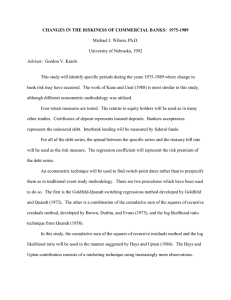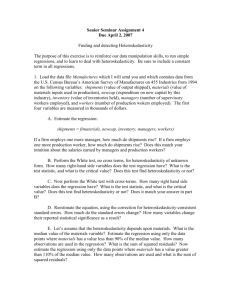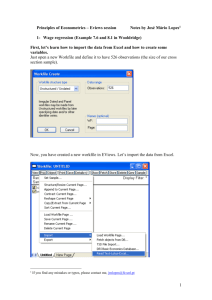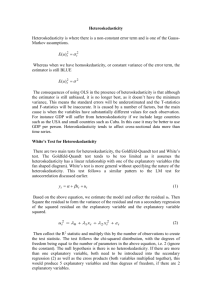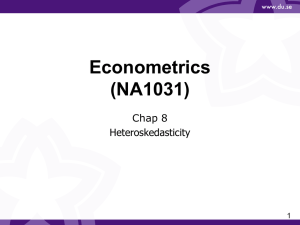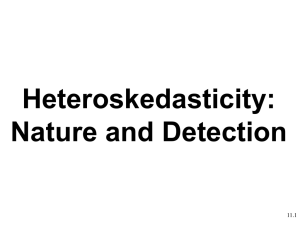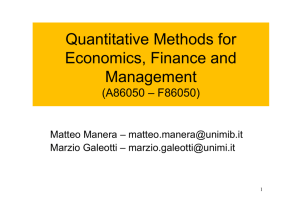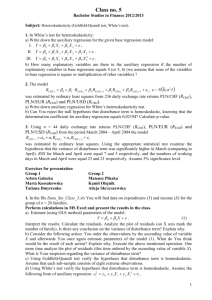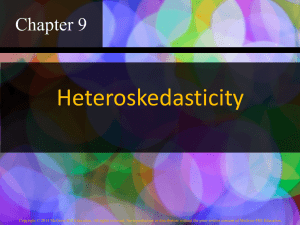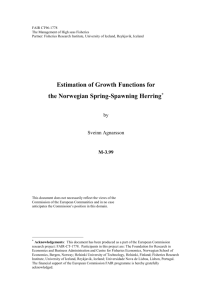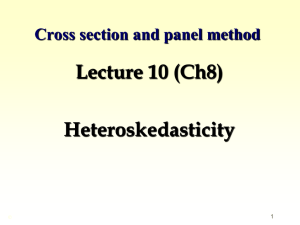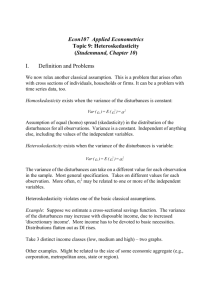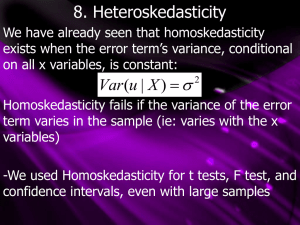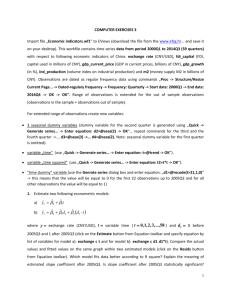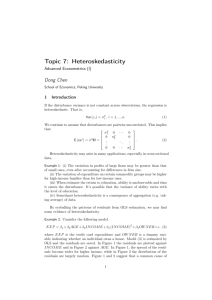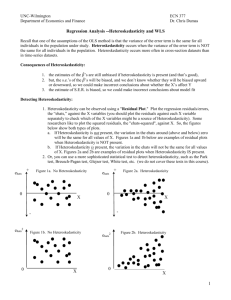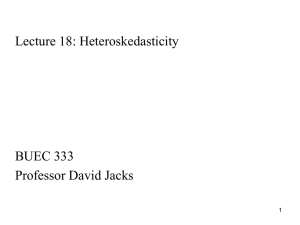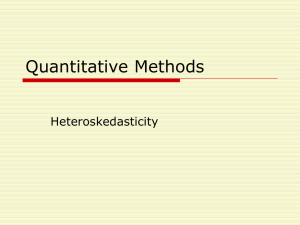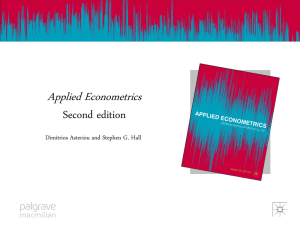HowToDealWithHet
advertisement
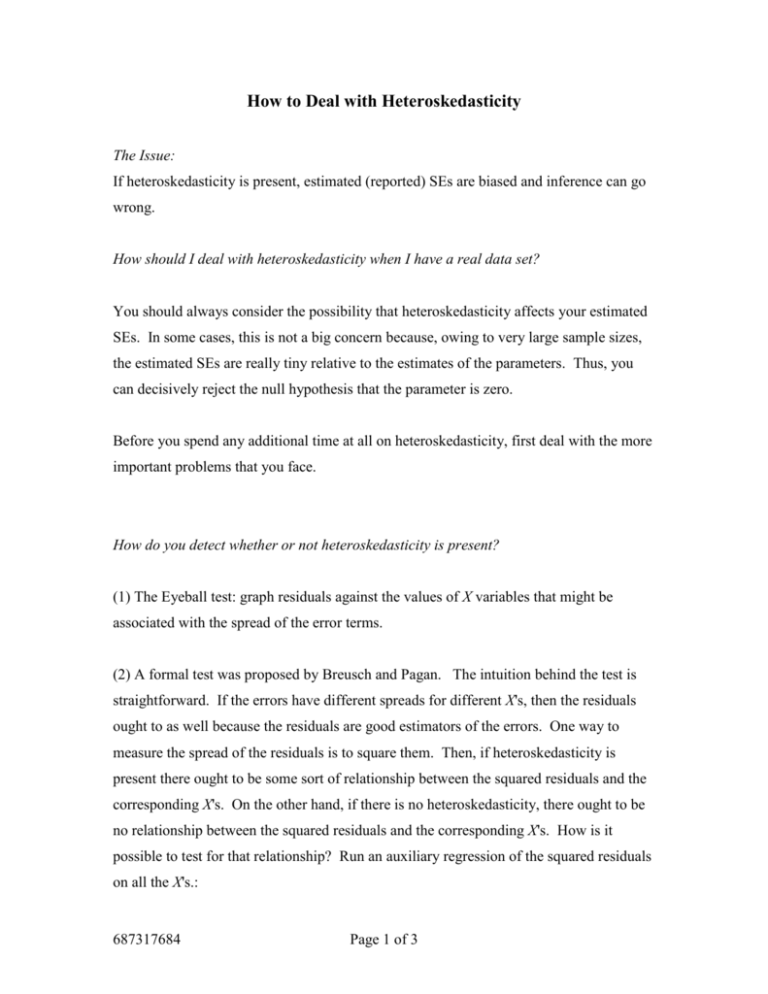
How to Deal with Heteroskedasticity The Issue: If heteroskedasticity is present, estimated (reported) SEs are biased and inference can go wrong. How should I deal with heteroskedasticity when I have a real data set? You should always consider the possibility that heteroskedasticity affects your estimated SEs. In some cases, this is not a big concern because, owing to very large sample sizes, the estimated SEs are really tiny relative to the estimates of the parameters. Thus, you can decisively reject the null hypothesis that the parameter is zero. Before you spend any additional time at all on heteroskedasticity, first deal with the more important problems that you face. How do you detect whether or not heteroskedasticity is present? (1) The Eyeball test: graph residuals against the values of X variables that might be associated with the spread of the error terms. (2) A formal test was proposed by Breusch and Pagan. The intuition behind the test is straightforward. If the errors have different spreads for different X's, then the residuals ought to as well because the residuals are good estimators of the errors. One way to measure the spread of the residuals is to square them. Then, if heteroskedasticity is present there ought to be some sort of relationship between the squared residuals and the corresponding X's. On the other hand, if there is no heteroskedasticity, there ought to be no relationship between the squared residuals and the corresponding X's. How is it possible to test for that relationship? Run an auxiliary regression of the squared residuals on all the X's.: 687317684 Page 1 of 3 Re siduals 2i 0 1X1i 2 X 2i ... k Xki i where i indexes observations. Then test the null hypothesis that 1 2 ... k 0 , i.e., that none of the X's are related to the squared residuals . This is the F-statistic which is reported by almost all regression packages, including Excel's Data Analysis and LinEst. If you reject the null, you have evidence of heteroskedasticity. Dealing with heteroskedasticity: Robust Standard Errors In theory, if one knows enough about the cause of the heteroskedasticity, it is possible to come up with a GLS or feasible GLS (FGLS) estimator that both has a smaller SE than the OLS estimator and produces correct estimated SEs. In practice, however, it is usually impossible to learn enough about the heteroskedasticity. Instead, the most common procedure is to employ the OLS estimator but, instead of using the standard estimates for SE’s, compute “robust standard errors”. We’ve written an addin, called OLSRegression.xla, which computes OLS estimates for the parameters, ordinary estimated SEs, and robust standard errors. We suggest you give it a try! Dealing with heteroskedasticity: A Different Functional Form A very common practical method for dealing with heteroskedasticity is to use an alternative functional form. For example, in earnings functions, there is usually strong evidence of heteroskedasticity when the dependent variable is in original units (e.g., the 687317684 Page 2 of 3 hourly wage). However, the heteroskedasticity generally becomes much weaker when the dependent variable is expressed in logarithmic form (e.g., the natural log of hourly wage). We believe this is an important reason why labor economists adopted the logarithmic functional form. 687317684 Page 3 of 3

